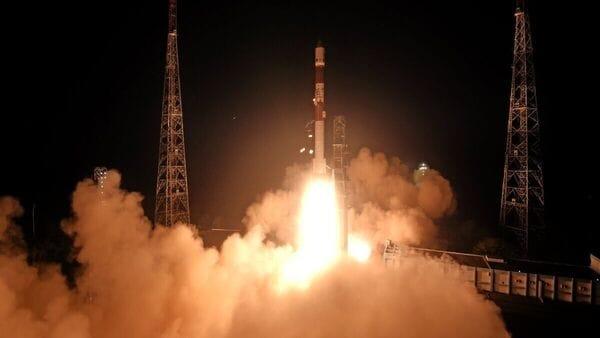
India's Space Journey Hits Several Milestones In 2024: From X-Ray Wonders To Solar Secrets
Key missions of the year for Indian Space Research Organisation (ISRO ) included the PSLV-C58/XPoSat for X-ray studies , Aditya-L1's Halo Orbit insertion for continuous solar observation, and GSLV-F14/INSAT-3DS for advanced weather monitoring . The EOS-08 satellite enhanced disaster management and environmental surveillance , while GSAT-N2 bolstered communication capabilities . The year concluded with the PSLV-C59/Proba-3 mission , validating formation flying, and the groundbreaking PSLV-C60 SpaDeX mission , which demonstrated in-space docking technology-a critical step toward India's ambition of establishing its own space station by 2035.Here are the major space missions and achievements in 2024:PSLV-C58 / XPoSat Mission (January 1, 2024)
ISRO's PSLV-C58 successfully launched the XPoSat satellite into an Eastward low inclination orbit. This mission is focused on X-ray polarisation measurements of celestial sources, marking a milestone in ISRO's scientific research in space. The satellite carries two key payloads : POLIX (Polarimeter Instrument in X-rays) and XSPECT (X-ray Spectroscopy and Timing), both designed to study cosmic X-ray emissions.
Aditya-L1 Halo-Orbit Insertion (January 6, 2024)The Aditya-L1 spacecraft , India's first solar observatory, was successfully inserted into its Halo Orbit around the L1 point , 1.5 million km from Earth. This maneuver ensures continuous and unobstructed observation of the Sun, a critical component of ISRO's mission to study solar phenomena like solar wind and space weather.
GSLV-F14 / INSAT-3DS Mission (February 8, 2024)INSAT-3DS, launched aboard the GSLV-F14, is a meteorological satellite designed for advanced weather monitoring and disaster management. The satellite will significantly enhance India's capabilities in weather forecasting and environmental monitoring, furthering the reach of India's meteorological services. This satellite will enhance India's weather forecasting capabilities and provide disaster warning services. INSAT-3DS will also support oceanic observations and aid in satellite-aided search and rescue operations.
EOS-08 Mission (August 16, 2024)The EOS-08 satellite, launched by SSLV-D3 , is a critical Earth observation satellite that will provide data for disaster monitoring, environmental surveillance, and security. It is equipped with advanced payloads like EOIR (Electro Optical Infrared Payload) and GNSS-R (Global Navigation Satellite System-Reflectometry), which support a range of applications, including wildfire detection, soil moisture assessment, and flood detection. With a primary mission life of 1 year, EOS-08 will carry payloads for infrared imaging, GNSS-based remote sensing, and UV radiation monitoring.
GSAT-N2 Launch (November 19, 2024)The GSAT-N2 satellite, launched aboard a Falcon-9 rocket, is designed to meet India's growing demand for high-throughput communications, including broadband and in-flight connectivity. The satellite operates in the Ka-band and will cover remote regions across India.
Also Read | 2025's 10 biggest NASA space launches-The moon, mars, and beyond PSLV-C59 / Proba-3 (December 5, 2024)ISRO launched Proba-3 , a European Space Agency (ESA) mission focused on precise formation flying between two spacecraft. This mission will validate advanced metrology sensors and control algorithms, opening new possibilities in space-based observatory configurations.
Also Read | ISRO astronaut spends 21 days in capsule: Know all surprising elements PSLV-C60 SpaDeX (December 30, 2024)On January 1, 2025, ISRO successfully launched the PSLV-C60 mission , achieving a significant milestone in India's space exploration. The mission included the SpaDeX (Space Docking Experiment), a pioneering effort to demonstrate in-space docking technology, marking a critical step toward future space endeavors.
Objectives: The mission, Dubbed "Bharatiya Docking Technology," aimed to develop and demonstrate the capability for rendezvous, docking, and undocking between two small spacecraft in Low-Earth orbit. The spacecraft, named SDX01 (Chaser) and SDX02 (Target), were placed in a circular orbit at 475 km.
The mastery of docking technology is vital for India's ambitious projects, such as lunar missions, sample retrieval from the Moon (Chandrayaan-4), satellite servicing, interplanetary missions, and establishing the Bharatiya Antariksh Station by 2035.
Also Read | ISRO achieves milestone with successful sea-level test of CE20 cryogenic engineThe mission also carried POEM-4, hosting 24 payloads from startups, industries, academia, and ISRO centers. By mastering docking technology, ISRO joins an elite group of nations-China, Russia, and the US-that have achieved this capability. SpaDeX is critical for India's future space ambitions, including lunar missions and establishing the Bharatiya Antariksh Station by 2035.
These milestones not only highlight ISRO's technical achievements but also emphasize India's increasing role in global space exploration, scientific research, and satellite technology. Legal Disclaimer:
MENAFN provides the information “as is” without warranty of any kind. We do not accept any responsibility or liability for the accuracy, content, images, videos, licenses, completeness, legality, or reliability of the information contained in this article. If you have any complaints or copyright issues related to this article, kindly contact the provider above.






















Comments
No comment